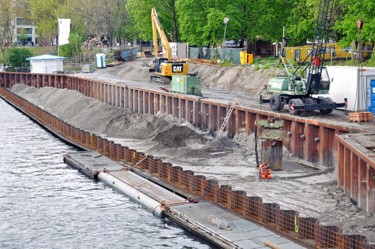States Commit Millions To Flood Prevention Measures


A changing climate and the ongoing development of coastal regions mean that flooding and stormwater overflow are bigger threats in the U.S. than ever. And now several states are preparing to spend millions of dollars to address the problem.
Virginia, Texas, South Carolina, Tennessee, West Virginia, and North Carolina are among those actively working to shore up their flood mitigation defenses. In many cases, their investments will be substantial.
“Virginia’s new Community Flood Preparedness Fund … will set aside an estimated $45 million a year for flood mitigation projects,” NPR reported, as an example. “In Texas, the state legislature created a nearly $800 million flood infrastructure fund that is currently reviewing its first round of applications from local governments.”
This trend in financing state-based efforts represents a remarkable shift in how flood resiliency and rehabilitation have been funded up to this point.
“It’s very unique that states put their own money into this type of effort,” Laura Lightbody, the director of the flood resiliency program at the Pew Charitable Trusts, told NPR. “They typically just wait for something to happen and then just get money from the federal government.”
The change likely stems from more money being set aside by Congress for pre-disaster projects — things like levees and drainage upgrades that can be developed before a flood event strikes — and FEMA requirements that local governments share certain flood mitigation costs with the federal government. For instance, the new flood fund in Texas is a bid to access federal funds with cost-sharing requirements.
“We certainly want to leverage the resources our federal partners have made available,” the chairman of the Texas Water Development Board said, per NPR. “That was a key priority, making sure state dollars are available for local matches to draw down those federal dollars.”
The novel coronavirus also appears to have partially motivated this growth in state funding for flood resilience. Sushma Masemore, the deputy assistant secretary for environment and state energy director in North Carolina, explained to Pew Trusts that her state’s new climate risk assessment and resilience plan is designed to better protect sections of the population that have proven the most vulnerable to COVID-19 as well as environmental disaster.
“System racism is a large factor in who has access to health care, who lives in substandard housing, and who has the financial ability to survive when a disaster or pandemic happens, as we have seen in recovery following hurricanes Matthew and Florence, and with COVID-19,” Masemore said. “We need to create strategies that address those systemic factors, so we build resilience to all future disasters, whether they are climate- or health-related.”
To read more about how states protect against flooding, visit Water Online’s Stormwater Management Solutions Center.
